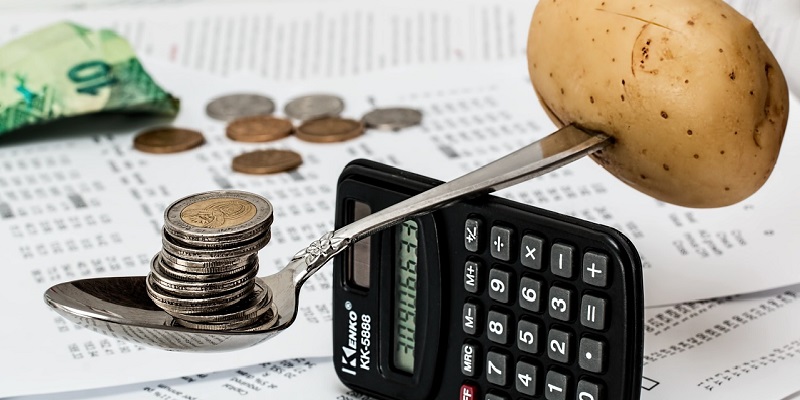
Food costs are a huge factor in the success of your restaurant. Whether you’re a quick service or fine dining restaurant, food costs can determine the restaurant’s profitability. Without knowing your food costs, there is no way to know if your menu items are generating a profit. There are numerous reasons why food costs can spike. Some fluctuations are out of your control like seasonal changes, and vendor growth issues. However, most are internal decisions that can greatly affect your profitability if not taken care of correctly. Everything your restaurant does from payroll to restaurant maintenance is controlled by food costs. Read seven tips below on how to keep your food costs sustainable:
1. Menu Planning
It’s impossible to plan for every price change from when it’s grown to when it gets to the table. Every restaurant experiences price surges at one time or another. That’s why it’s important to balance expensive ingredients with inexpensive ingredients. Having a successfully balanced menu, involves choosing foods that have stable prices so they can easily counter needed menu items that have fluctuating prices. When planning your menu it’s important to always important to stay at a 30-35% benchmark. That means your menu items should always be at least 30% more than what you paid for all of the ingredients within the dish. If this rule is not working for you, it’s never a good idea to raise menu prices further. Raising menu prices can make people uncomfortable, and it can be more beneficial to find lower costing ingredients.
2. Control Waste
Everyday restaurants around the world throw away tons of food. Millions of dollars are being torched because many restaurants don’t have good waste management practices or they are just lazy. According to a 2014 study by the Food Waste Reduction Alliance, 84.3% of unused food in United States restaurants ends up being disposed of. That’s a huge number that could be better served recycled or even donated. It’s important to get creative with all of your ingredients to prevent the least amount of waste within your restaurant especially if you work with a high amount of non-perishable items.
3. Reduce Theft
It might be surprising, but food theft is extremely common within restaurants. You will encounter a type of employee who thinks because I work in a restaurant, I deserve to get free food. You should ensure your employees have a clear understanding of this principle from their start of employment. Having a software system that accounts for inventory is a great tool to enforce and track food levels. Making sure your inventory levels reconcile with the kitchen tallies at the end of every day is a great way to start. Most POS systems include this as an automotive feature that can make your day-to-day restaurant operations much easier to handle.
4. Portion Control
If your restaurant is not a buffet, you need to ensure you are using adequate portion controls. The reason why restaurant chains are so successful is because they use the same portions no matter the location. You can order a Big Mac in California, and receive the exact same size burger in China. These big restaurant chains have done their research and have a science down for keeping proportion in relation to costs. Even if you are a small restaurant establishment, portion control is crucial. Even if someone says they want to take some of their food home with them, the goal is to have as many people finish their meals as possible, while they are at the restaurant.
5. Staff Education
Always be educating your staff when it comes to food costs. Ensure that your chefs understand the value of every ingredient used in their dishes. For wait staff, you can teach your staff how to present menu items and prevent over ordering from guests. For example, if a guest says, “I’m not that hungry, but I can’t pass up the rack of baby back ribs.” Have your staff be prepared to say something like, “why don’t you try our half rack, and we can always heat up the second half if you are still hungry?” It’s important that your staff doesn’t take everything at face value and to always have things prepared to say so things don’t get wasted.
6. Food Vendors
Always do your research before seeing any food vendors. It’s important to not be afraid to shop around. It’s important to find the best cost, and if you don’t ask you won’t get it. Find suppliers that you trust and you can build relationships off of. Building these partnerships can create successful relations to build your business of off. They can bring in new ideas and keep you up to date with trending ingredients. It can also be a good idea to have vendors that are specific for different seasons. A vendor in California might be the best to order carrots from, while Florida might be the best place to get oranges from.
7. Reporting
If your restaurant doesn’t have an in-depth reporting application, you are surely allowing things to slip through the cracks. Remember every cent counts. Food suppliers, cooks, and even restaurant owners are known to make mistakes. You could get double charged for inventory, your cook may not be balancing ingredients right, or you could accidentally order more inventory than you need for a particular week. Today’s POS systems offer in-depth inventory management functions that automatically analyze everything from your vendor orders to daily inventory used to recommendations on maintaining healthy food cost levels. Some POS systems will even adjust menu items automatically if you change any of your ingredients.